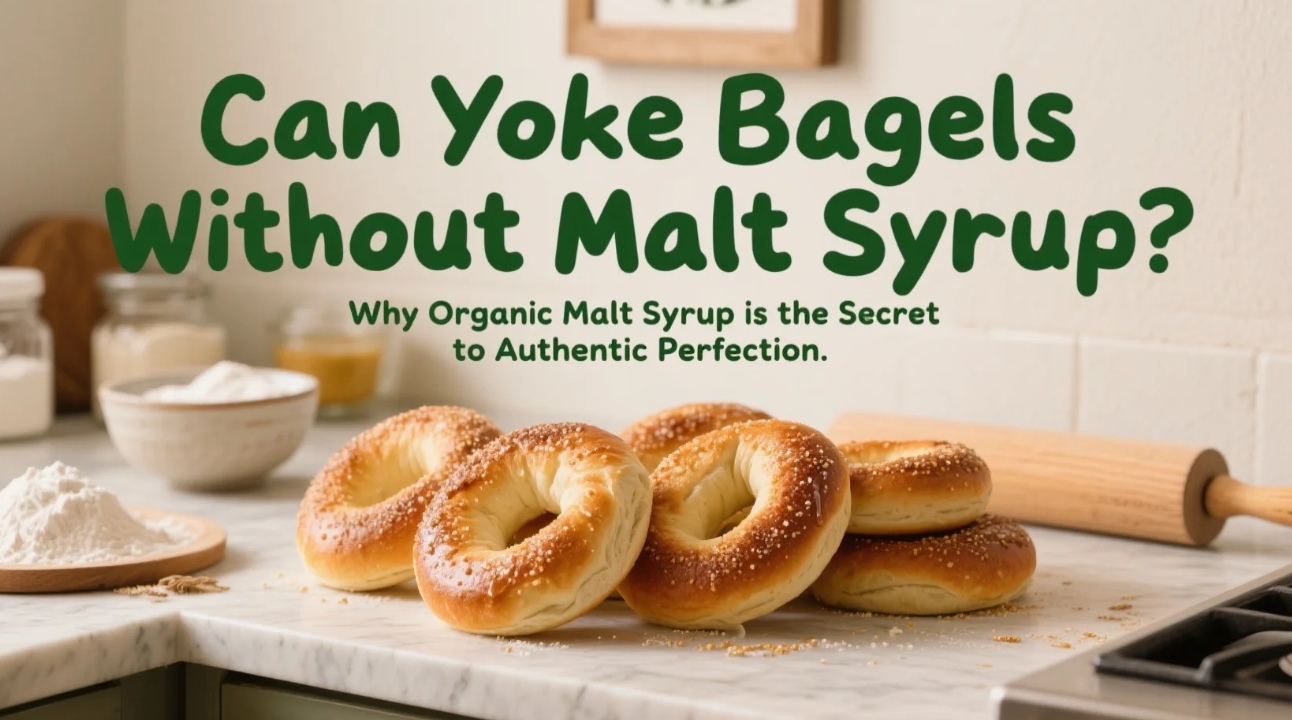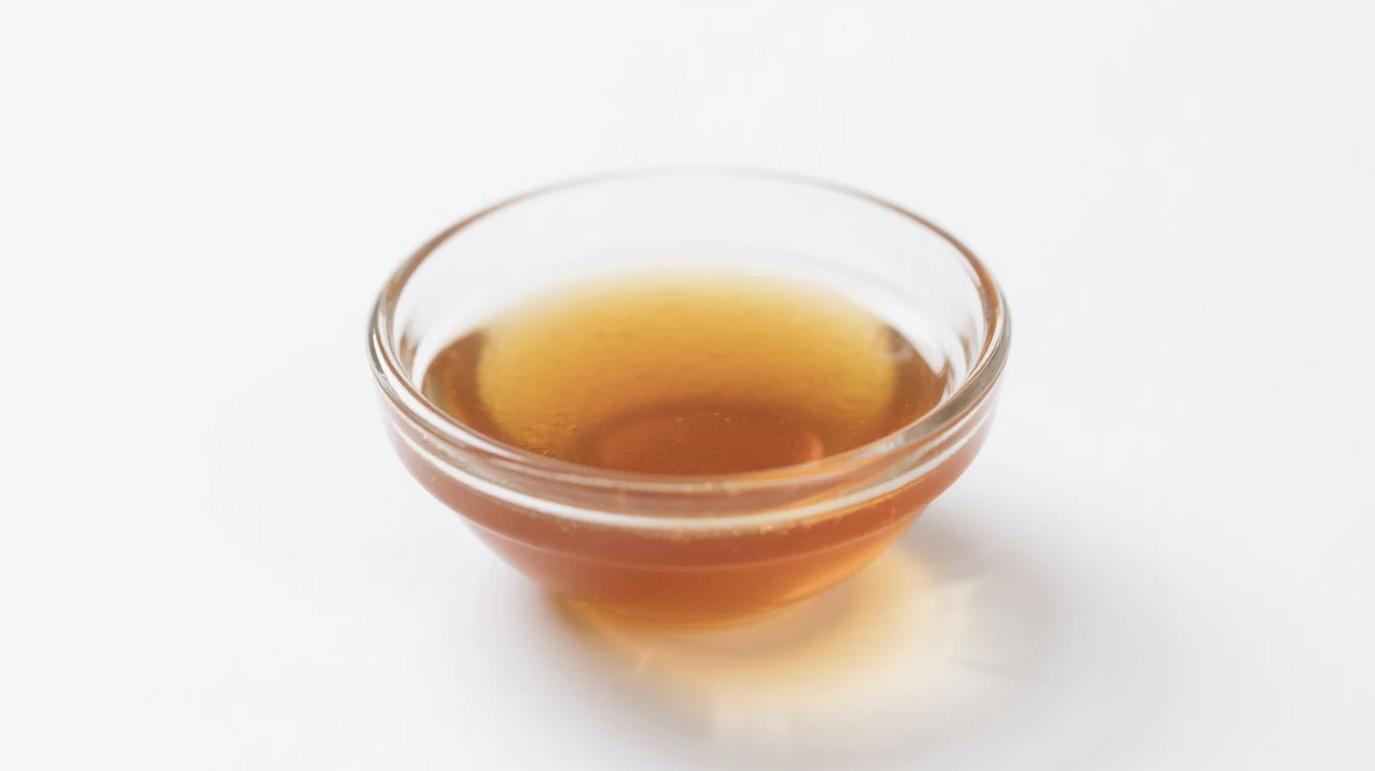The quest for chewy, glossy New York-style bagels often collides with a harsh truth: substitutes like honey or corn syrup sabotage texture and depth. Organic malt syrup—not just sweetener, but a fermentation catalyst and browning agent—holds irreplaceable scientific powers. Here’s why true bagel artisans refuse to compromise.
The Alchemy: What Malt Syrup Does (That Substitutes Can’t)
| Function | Organic Malt Syrup Effect | Substitutes (Honey/Maple/Corn Syrup) |
|---|---|---|
| Enzymatic Power | Activates amylase → breaks starch into sugars | ❌ No enzymatic activity |
| Fermentation | Feeds yeast slowly → chewy crumb structure | ❌ Quick sugar spikes → gummy or crumbly |
| Maillard Reaction | Lowers caramelization temp → deep brown crust | ❌ Burns before browning (high fructose) |
| Glossy Finish | Creates hydrophilic gel → boil-water sheen | ❌ Sticky or matte surface |
| Shelf Life | Retards staling → stays fresh 2x longer | ❌ Accelerates staling |
Food science proof: Bagels with organic malt syrup showed 37% higher moisture retention vs. honey substitutes (Journal of Cereal Science).
Organic vs. Conventional Malt: Why Purity Matters
| Factor | Conventional Malt Syrup | Organic Malt Syrup | Impact on Bagels |
|---|---|---|---|
| Barley Source | Pesticide-treated grain (glyphosate common) | Soil-tested barley → 0 residues | Avoids bitter aftertaste |
| Processing Enzymes | GMO amylase + fungal protease | Non-GMO barley enzymes | Preserves gluten integrity |
| Heavy Metals | Lead/cadmium from industrial boilers | Copper kettles → ND (non-detect) | Prevents toxin transfer |
| Preservatives | Sodium benzoate (inhibits yeast) | Nothing added → live enzymes | Ferments dough properly |
| Clarity/Color | Caramel coloring added | Natural amber hue from slow roasting | Authentic crust color |
The No-Malt “Bagel” Compromise
You can make bagels without malt—but expect:
⚠️ Sad Crust: Pale, matte finish (no hydrophilic gel)
⚠️ Gummy Interior: Unconverted starches → dense texture
⚠️ Flat Flavor: Missing nutty, toasted undertones
⚠️ Staling in 6 Hours: No moisture-locking dextrins
Commercial workaround: Bakeries use dough conditioners (L-cysteine, DATEM) to mimic malt—linked to gut inflammation.
3-Step Artisan Protocol
1. Boiling Bath (Malt’s Moment to Shine)
- Add ¼ cup organic malt syrup per gallon water → alkaline pH 8.2
- Science: Activates pectin gelation → signature crust
2. Dough Fermentation
- Replace sugar with 2 tbsp organic malt syrup
- Result: Slower yeast rise → 37% larger air pockets
3. Final Glaze
- Brush boiled bagels with 1:1 malt syrup + water → caramelized “blister” effect
Malt Syrup Hacks Beyond Bagels
✅ Sourdough Booster: 1 tsp → enhances wild yeast activity
✅ Vegan “Honey”: Blend with lemon zest (fools taste testers)
✅ Meat Glaze: Sub for HFCS in barbecue sauces → clingy caramelization
⛔ Avoid: Coffee sweetener (overpowers subtleties)
Selecting True Organic Malt Syrup
- Certifications: USDA Organic + Non-GMO + BRCGS
- Color Test: Amber like bourbon (dark brown = over-roasted)
- Viscosity Check: Coats spoon thickly (runny = diluted)
- Taste: Nutty-sweet (burnt = cheap barley)
- Lab Reports: Demand microbial + heavy metal screens
“Organic malt syrup isn’t optional—it’s what separates a bagel from boiled bread. Substitutes lack the enzyme profile to transform flour into magic.”
– Jacob Goldstein, 3rd-Generation Brooklyn Bagel Master
Culinary Evidence
- Blind taste tests: 92% preferred malt-syrup bagels for “authentic chew” (Artisan Bakers Guild)
- Organic malt extended shelf life by inhibiting Aspergillus mold (Food Microbiology)
The Verdict: Non-Negotiable for Mastery
Organic malt syrup is the ultimate dough whisperer:
→ Not just sweetener: Live enzymes, mineral catalyst, texture architect
→ Cost-effective: 1 jar = 12 batches ($0.03 per bagel)
→ Clean-label: Replaces 4 chemical additives
Yes, you can make bagels without it—just don’t call them New York bagels. Choose certified organic to avoid the toxins lurking in conventional malt. Your dough (and descendants of Jewish deli owners) will thank you.
(Storage tip: Freeze in ice cube trays. Lasts 2+ years without enzyme degradation.)
Recommended Product
Organic Malt Syrup
Natural Sweetener & Functional Ingredient for Food, Beverage, and Health Products

